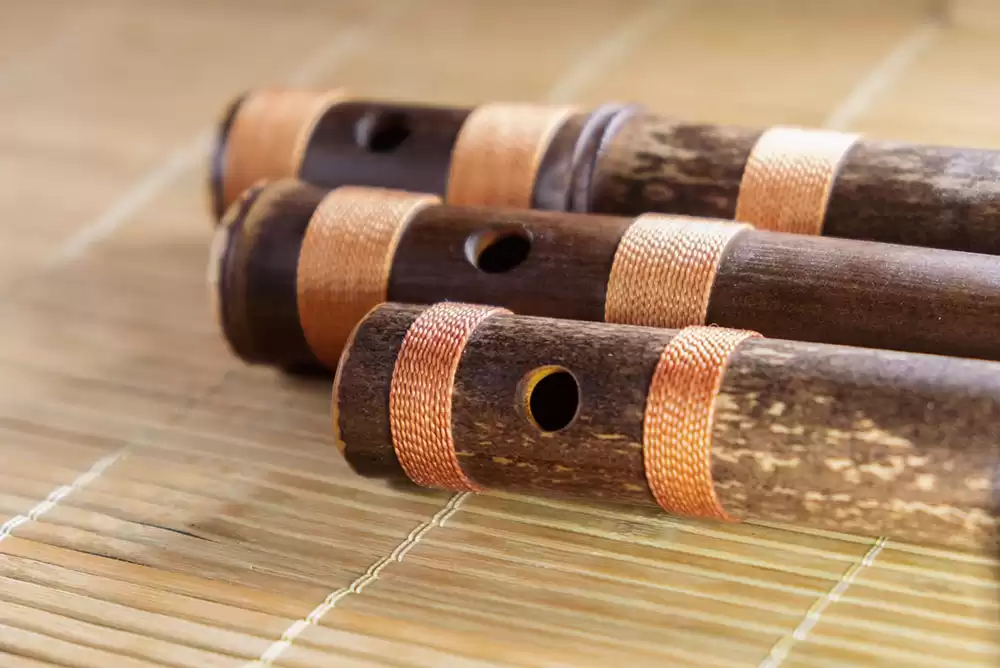
01 Jan Types of Shakuhachi
Whether you’re into Japanese culture or love folk music, you should know about the shakuhachi flute. Finding good jinashi shakuhachi instruments for sale is a challenge. It is even more difficult to find jiari or jimori shakuhachi. All of these are fascinating Japanese flutes that have a beautiful, airy sound impossible to replicate on any other instrument.
Learning more about the jinashi shakuhachi’s history and application can provide valuable context for you if you are curious about traditional musical instruments. When in doubt, a jinashi shakuhachi is your best bet if you want an authentic, hand-crafted Japanese flute. Continue reading to learn about the history and different types of shakuhachi.
History of the Shakuhachi
The shakuhachi has a rich history, even though it is from Japan, it has Chinese origins dating back to the 600s. Variations of jinashi shakuhachi have been created over centuries, but the most well-known version of this bamboo flute wasn’t developed until the 1500s. This version was longer, had more holes, and thus had superior musical range, volume, and tone.
Shakuhachi were associated with a certain sect of Zen Buddhist monks, known as the Fuke. The shakuhachi was often used in meditation by the Fuke. Under the reign of a certain shogun, traveling in Japan was widely restricted to prevent military uprising; however, the Fuke obtained permission to travel since their sect was nomadic. Eventually, spies impersonated these monks. One could test to see if the individual was a genuine member of the Fuke or a spy by asking them to play complex songs on their shakuhachi. Under the Meiji restoration, Zem Buddhism was banned, which meant shakuhachi flutes were subsequently banned. Today, the popularity of the shakuhachi (especially the jinashi shakuhachi) continues to grow.
Ji-Nashi
Jinashi shakuhachi is the first type of shakuhachi instrument. The name refers to its construction. Ji is a Japanese paste used to reinforce bamboo, and the term ji-nashi essentially means “no paste.” A jinashi shakuhachi is built entirely by carving and boring out the flute by hand, leaving the instrument as natural as possible.
Trying to find a high-quality jinashi shakuhachi for sale is not easy and you must ensure a master of the craft has constructed it. The jinashi shakuhachi offers numerous advantages over other subtypes because it is lighter and slightly more durable.
Ji-Ari
In contrast to the jinashi shakuhachi, the jiari features a paste coating on the interior cavity of the flute. While not being as traditional as the jinashi shakuhachi, the jiari allows the maker to have more control over the internal shape of the flute, thus having more input over the sound and tone of the final product.
The jinashi shakuhachi maker is at the mercy of the bamboo they have chosen to use, but the jiari shakuhachi maker has no such qualms. The advantages of this Japanese flute are that it is generally easier to find, and you can take it apart, making it easier to carry.
Ji-Mori
A jimori shakuhachi uses some paste in its construction, as opposed to the paste-free jinashi shakuhachi and the heavily pasted jiari. To make the right sounds, sometimes an addition is made to the internal bore instead of a subtraction (i.e. carving). Thus in a jimori shakuhachi, a small amount of paste is applied when it is made. Most jimori are fairly similar to a jinashi shakuhachi, since they only have a small percentage of the internal bore covered with ji.
Conclusion
Shakuhachi flutes are have a rich history and are beautiful instruments with an unparalleled sound quality. A master of the shakuhachi can bend the airflow and pitch of the instrument to create an uncharacteristically wide scale with just five finger holes on the flute. The best jiari, jimori, and jinashi shakuhachi are made by masters who have years (if not decades) of experience in crafting these instruments. Jinashi shakuhachi are a very high-quality instrument, as long as they are made by someone well-versed in the craft.
If you’ve been wanting to purchase your own jinashi shakuhachi, you’ve come to the right place. Chikushin Shakuhachi crafts each jinashi shakuhachi by hand to give you a flute with a rich, authentic, and pure tone. Order an authentic jinashi shakuhachi from us today.


